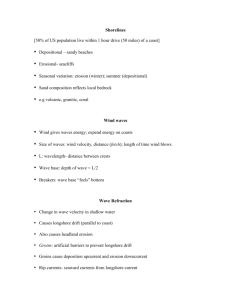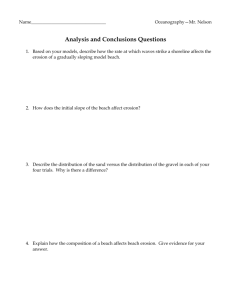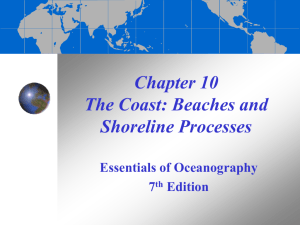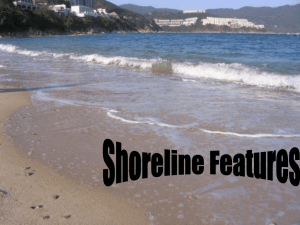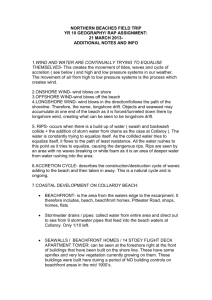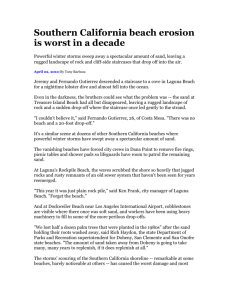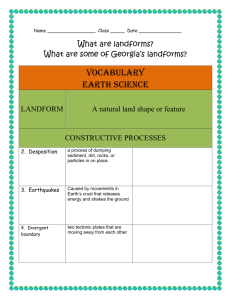Outline
advertisement
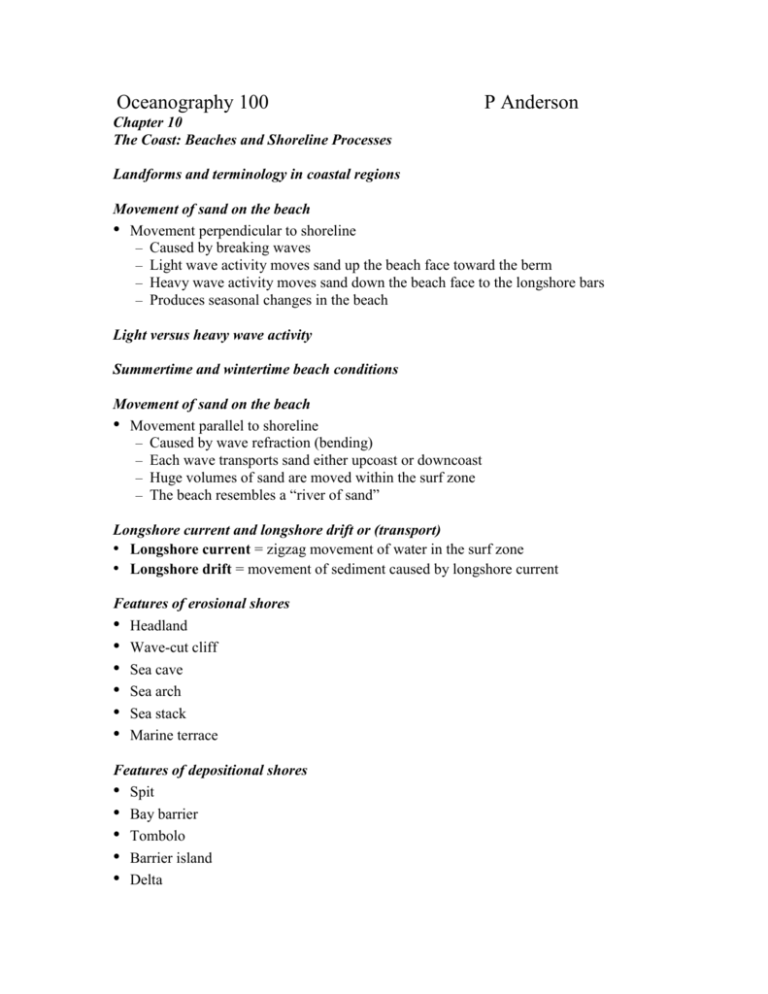
Oceanography 100 P Anderson Chapter 10 The Coast: Beaches and Shoreline Processes Landforms and terminology in coastal regions Movement of sand on the beach • Movement perpendicular to shoreline – Caused by breaking waves – Light wave activity moves sand up the beach face toward the berm – Heavy wave activity moves sand down the beach face to the longshore bars – Produces seasonal changes in the beach Light versus heavy wave activity Summertime and wintertime beach conditions Movement of sand on the beach • Movement parallel to shoreline – Caused by wave refraction (bending) – Each wave transports sand either upcoast or downcoast – Huge volumes of sand are moved within the surf zone – The beach resembles a “river of sand” Longshore current and longshore drift or (transport) • Longshore current = zigzag movement of water in the surf zone • Longshore drift = movement of sediment caused by longshore current Features of erosional shores • Headland • Wave-cut cliff • Sea cave • Sea arch • Sea stack • Marine terrace Features of depositional shores • Spit • Bay barrier • Tombolo • Barrier island • Delta Formation of barrier islands • Sea level rose after the last Ice Age • Caused barrier islands to roll toward shore like a tractor’s tread Beach compartments in southern California • Beach compartments include: – Rivers – Beaches – Submarine canyons Evidence of emerging and submerging shorelines • Emergent features: – Marine terraces – Stranded beach deposits • Submergent features: – Drowned beaches – Submerged dune topography – Drowned river valleys Changes in sea level • Sea level has changed throughout time • Tectonic and isostatic movements are localized and change the level of the land • Eustatic changes cause sea level to rise or fall worldwide and are produced by: – Changes in seawater volume – Changes in ocean basin capacity Sea level has risen since the last Ice Age • Sea level was 120 meters (400 feet) lower during the last Ice Age • About 18,000 years ago, sea level began to rise as the glacial ice melted Relative sea level rise at New York City • Sea level has risen 40 centimeters (16 inches) since 1850 • Global warming is predicted to increase the rate of sea level rise U.S. coastal erosion and deposition Types of hard stabilization • Hard stabilization perpendicular to the coast within the surf zone: – Jetties—protect harbor entrances – Groins—designed to trap sand • Hard stabilization parallel to the coast: – Breakwaters—built beyond the surf zone – Seawalls—built to armor the coast Jetties and Groins • Jetties are always in pairs • Groins can be singular or many (groin field) • Both trap sand upstream and cause erosion downstream Breakwater at Santa Barbara Harbor, California • Provides a boat anchorage • Causes deposition in harbor and erosion downstream • Sand must be dredged regularly Seawalls and beaches • Seawalls are built to reduce erosion on beaches • Seawalls can destroy recreational beaches • Seawalls are costly and eventually fail Alternatives to hard stabilization • Restrict the building of structures too close to the shore • Eliminate programs that encourage construction in unsafe locations • Relocate structures as erosion threatens them

